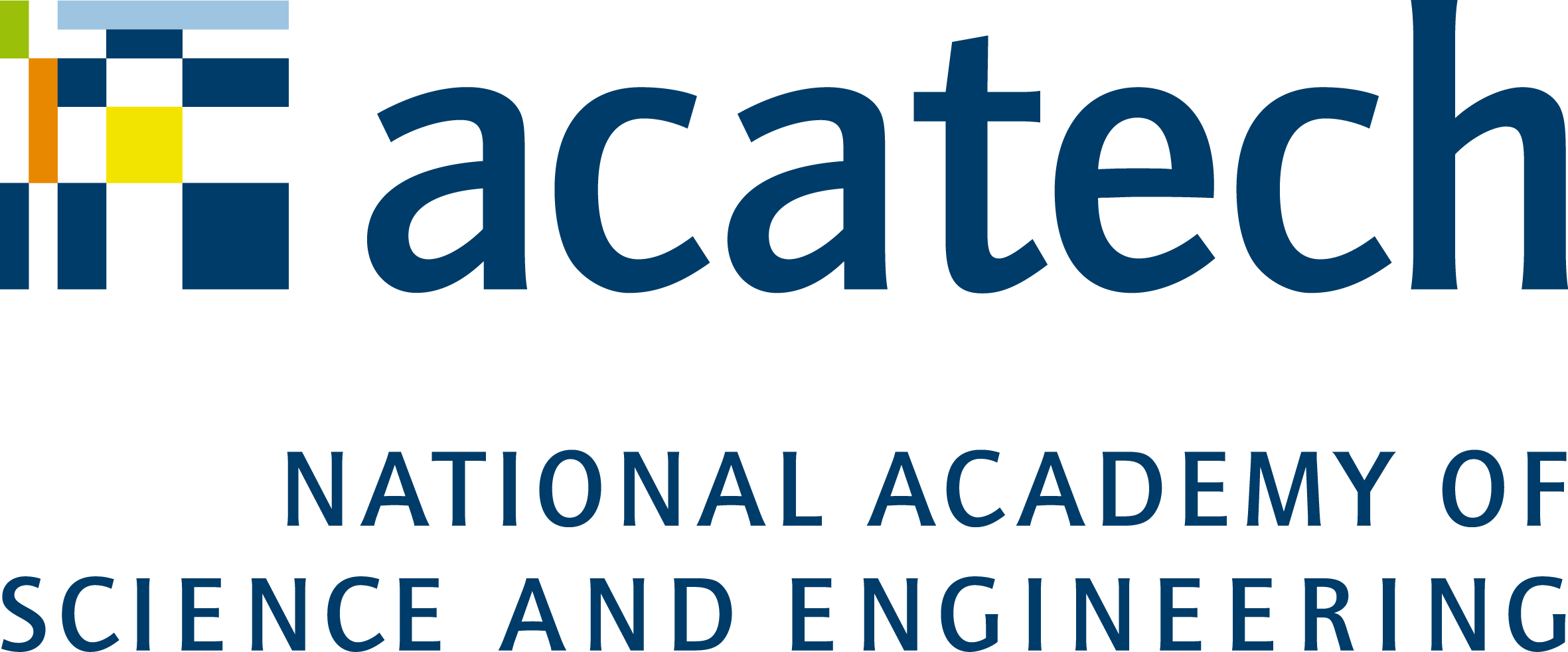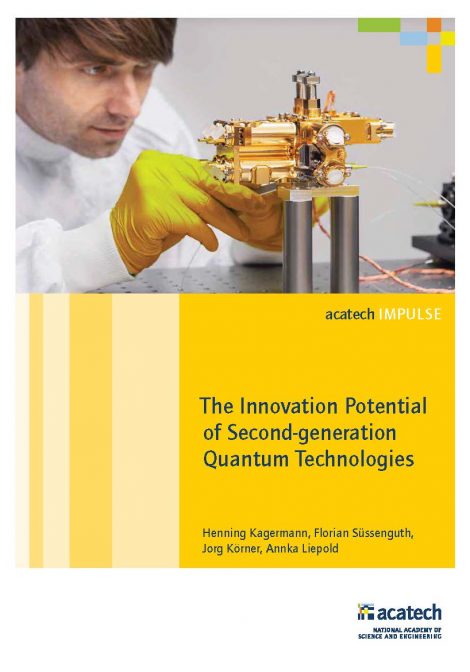The Innovation Potential of Second-generation Quantum Technologies
The quantum computer is merely the best known example of a whole series of conceivable innovative applications for putting quantum-mechanical effects to controlled use. Apart from permitting the design of tap-proof communication channels or novel simulation methods which might be used in materials development, insights from quantum physics could enable quantum sensors which, embedded in medical devices, would allow patients to benefit from more accurate and simultaneously less intrusive investigations. Successfully developing this and further secondgeneration quantum technologies will require close, long-term collaboration between researchers and businesses. If such an effective quantum technology ecosystem were to be successfully developed in Germany, it would make a major contribution to securing the country’s technological sovereignty.
This acatech IMPULSE paper summarises the most important scientific and economic trends in relation to second-generation quantum technologies and provides an overview of the associated innovation potential and challenges for Germany and elsewhere.



